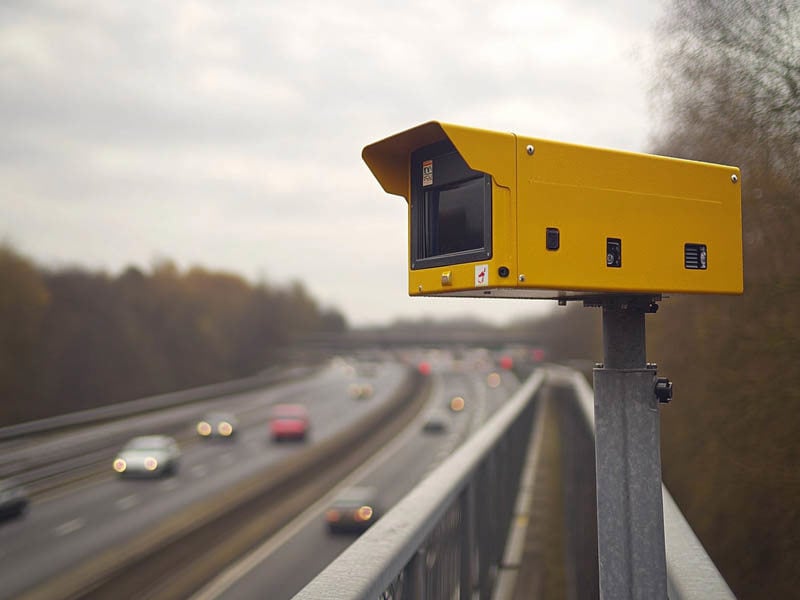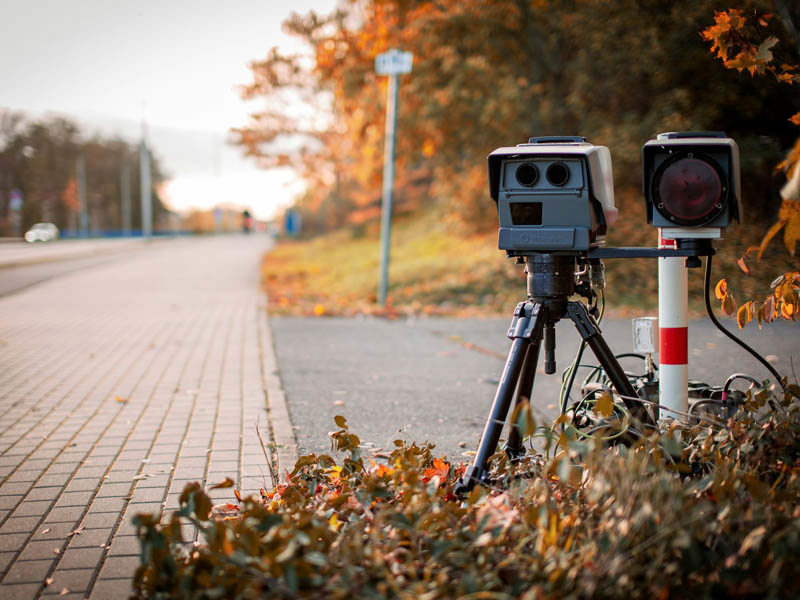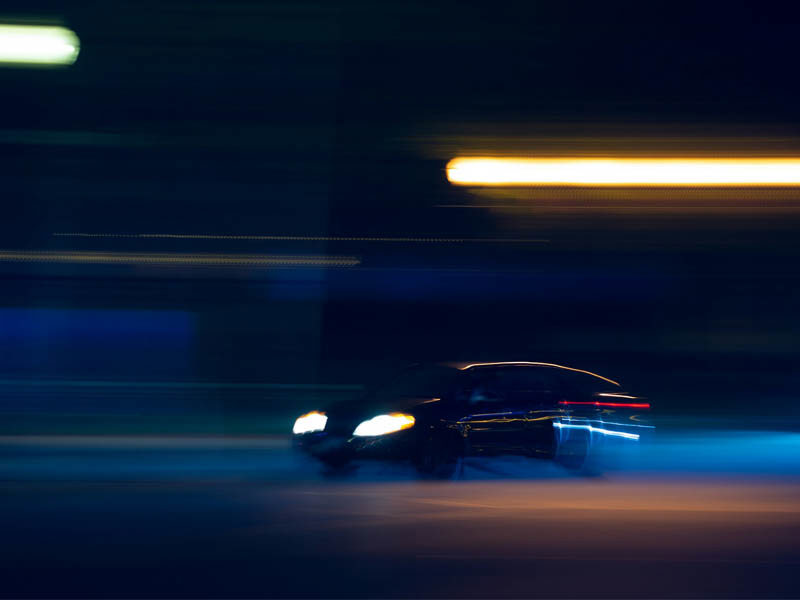
Speed cameras, the little roadside enforcers that can make or break your day. Love or hate them, they’re here to stay, keeping UK roads safer and helping to ensure drivers stick to the speed limits.
Beyond the occasional flash in the rearview mirror, how much do you really know about them?
Speed cameras come in all shapes and sizes, from the familiar yellow Gatso cameras to sneaky mobile speed camera vans, the UK uses a range of tactics to keep our roads safe.
In this blog, we’ll explore the types of speed cameras in the UK, how they operate, and what happens if you’re caught speeding. We discuss:
Speed cameras exist on our roads for one simple reason: road safety. The faster you drive, the risk of an accident increases, thanks to reduced reaction time and longer stopping distances.
According to UK government data, more than half (56%) of fatal collisions in 2023 had at least one speed-related factor assigned.
Speed cameras are a deterrent for speeding and contribute to reducing speed-related accidents and saving lives.
But let's be honest, they also bring in a fair bit of revenue for the government through fines - though the authorities insist this isn’t their primary purpose!

Speed cameras aren’t all created equal. Some are static watching over a stretch of road 24/7, while others are mobile, popping up unexpectedly to catch speeders in the thick of it. Here’s a breakdown of the most common types of speed cameras in the UK:
Gatso speed cameras (fixed)
The most common speed camera in the UK is the Gatso camera, which uses a radar to detect speeding vehicles. These cameras are usually positioned at speeding and accident hotspots and work by taking two photos of your car as it crosses road markings, calculating your speed in the process.
They are the big yellow boxes that are usually mounted on poles or roadside structures. You’ll know if you’re speeding because you’ll see a visible flash in your rearview mirror when the camera is triggered.
Pretty much all modern sat-navs are aware of Gatso speed camera locations, and they should give you a signal when one is approaching.
Truvelo speed cameras
Unlike Gatsos, Truvelo speed cameras face forward and use sensors embedded in the road to measure speed. They snap a picture of the driver as well as the number plate, making it hard to defend against the fine.
Truvelo speed cameras are yellow and grey and are often found at crossings or junctions.
Average speed cameras (SPECS)
Average speed cameras are sneaky, but they’re probably the best when deterring speeding. Rather than capturing a single snapshot, average speed cameras track your speed over a stretch of road using multiple cameras.
They then calculate your average speed between two points, making it virtually impossible to slow down and avoid the fine. They don’t have a visible flash, meaning if you’re caught speeding, you’ll get a nice surprise through the post.
They are yellow cameras mounted above the road, usually on a bridge or walkway, and are most likely to be found on motorways.
HADECS speed cameras
The HADECS system is used on smart motorways to enforce changing speed limits. The cameras are pretty clever and automatically adjust to the new speed limits that are displayed on the overhead signs.
HADECS are small grey cameras, usually on a bridge or gantry, making them pretty tough to notice.
Mobile speed cameras
Mobile speed cameras are the bane of the road for a lot of motorists. They can pop up anywhere (although usually speeding hotspots) and are operated from vans parked by the roadside.
The sneaky thing about mobile speed cameras is that they are parked in strategic locations where you don’t suspect one, so it’s essential that you abide by the speed limit at all times to avoid a nasty surprise.
Variable speed cameras
Variable speed cameras are very similar to average speed cameras. However, they adjust based on live traffic conditions and enforce the speeding limits displayed on the road signs.
For example, if there’s a lot of traffic and the signs say to drive 50mph, a variable speed camera will adopt this new speed and catch anyone exceeding it.
No, not all speed cameras in the UK are yellow. While most fixed speed cameras are painted yellow for visibility, mobile cameras and cameras such as the HADECS camera may be a different colour or hidden from view.
Don’t assume all speed cameras are yellow. If you see something that looks like a speed camera but is a different colour, ensure you are following the speed limit.

If you’re caught exceeding the speed limit, it’s likely that you’ll receive a speeding ticket. However, here’s the process of receiving your ticket:
If caught by a speed camera:
- Within 15 days, you’ll be sent a Notice of Intended Prosecution and a Section 172 notice.
- After you’ve confirmed who was driving at the time of the offence, you’ll be sent either a Fixed Penalty Notice (FPN) or be sent to court.
If caught by a police officer:
Depending on the situation, you’ll either receive a verbal warning, a Fixed Penalty Notice, or a court order.
If you plead guilty to a Fixed Penalty Notice, you must pay a £100 fine, and three points will be added to your license. If you build up 12 or more points over three years, you can be disqualified from driving.
You might get the option to attend a speed awareness course, which disregards the above.
Looking for more information on this? Check out our guide, What Happens If I Get a Speeding Ticket in My Lease Car?
The most obvious way to avoid a speeding ticket is simple: stick to the speed limit! But there are a few extra ways you can help ensure you remain compliant with the speed limit:
- Use cruise control on motorways to maintain a steady speed
- Keep an eye out for road signs - speed limits can change unexpectedly, so ensure you remain on your toes. A lot of modern cars come with speed limit recognition technology, which will display the limit on your digital instrument cluster.
- Watch out for average speed zones, as they can creep up out of nowhere. Ensure you are abiding by the speed limit before the first camera, as slowing down before the last camera won’t help.
- Stay alert to mobile camera spots - Mobile speed cameras often appear near schools, busy junctions, and accident-prone areas. They also are often hidden from sight, such as down a side road or tucked behind some shrubbery, which is a bit cheeky.
A common question among all drivers is: are speed cameras always working?
While some older fixed cameras might not be active, it’s impossible to know which ones are turned on at any given moment.
Although there have always been rumours about empty speed camera boxes, is it a risk you're willing to take? Of course, you’re always going to be driving the speed limit, but if you see a speed camera, double check you are driving at the right speed.
Speed cameras are an unavoidable part of driving in the UK. They’ll appear on a lot of main roads and are designed to encourage responsible driving.
Whether it’s a fixed speed camera, mobile speed camera, or average speed camera, knowing how they work can help you stay safe on the roads and avoid hefty fines!
Looking to learn more about UK road law? Check out our UK Road Law guides, such as our Guide to Driving on the Motorway and What Happens If I Get a Speeding Ticket in My Lease Car?
We’re also one of the UK’s leading car leasing brokers, offering a range of services to suit your every need. Check out our fast lease service, which offers delivery within four to six weeks (delays may occur), or our used car leasing service.
Originally posted: 4th February 2025

